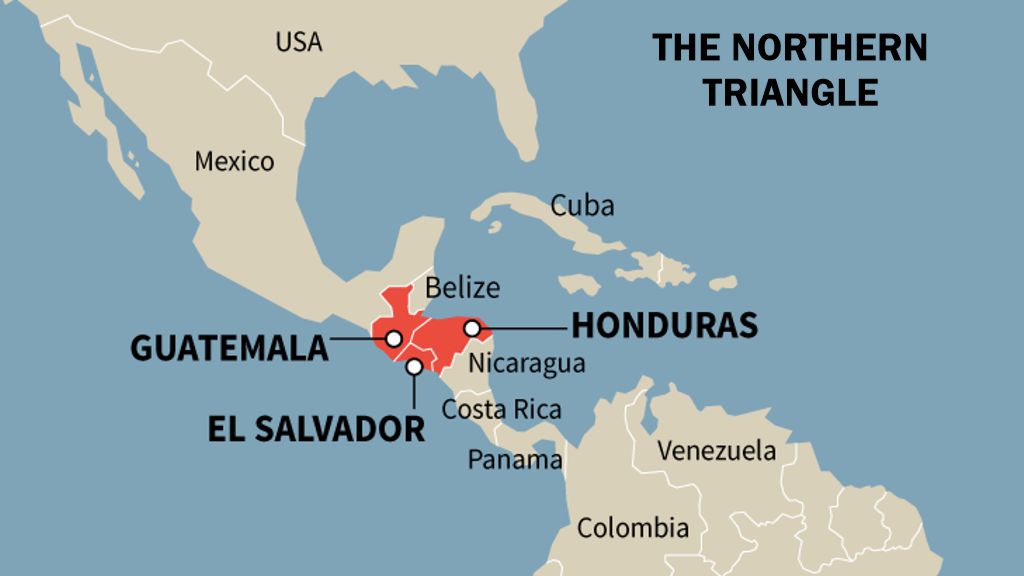American companies ready to invest in the Northern Triangle countries of Central America view fair incentives, security and skilled labor as important considerations when moving their investments from Asia or expanding those already present in the region.
During the Annual Meeting of the HUGE Business and Investment Council in Washington D.C. on October 12 and 13, companies such as Houston Airport System, UPS, Hilton and Kroll, announced their intention to explore the opportunities offered by Honduras, El Salvador and Guatemala to open new businesses. Companies already operating in the region, including Fruit of the Loom, SanMar, Elcatex, Parkdale Mills and Crowley, are aiming to expand.
HUGE reiterated its long-held position that the CAFTA rules of origin be maintained to support the development of a vertically integrated textile industry in the Northern Triangle that is linked to the U.S. market. CAFTA is now driving significant new investment towards this goal, and if the rules of origin change, those investments will not come to the region.
“Having clear and predictable rules of the game is essential to attract investment to the countries of the region. We at the IDB are ready to support it with financing and technical assistance to achieve this,” said the new Interim President of the Inter-American Development Bank, originally from Honduras, Reina Irene Mejía, at the opening of the HUGE Annual Meeting.
“Crowley has served the U.S.-Central America trade for many decades, and we are constantly investing in our people, assets, and technology to provide the best end-to-end services to our customers. We work with governments, business partners, and communities to advance nearshoring as a supply chain solution for customers that also provides value to those countries and their people,” said Crowley Chairman and CEO, Tom Crowley. “Fair incentives to encourage expansion of operations, new investments and beneficial trade is an economic multiplier,” Mr. Crowley added.
Investors and entrepreneurs from the Northern Triangle have welcomed American companies that have shown interest in the region. They are making new investments in renewable energy, roads, and industrial development zones with a green and technologically advanced approach that makes this region a competitive and attractive platform for production, generating thousands of new jobs.
In addition to the projects HUGE announced last year and those already in execution, three new projects were presented today. In Guatemala, Synergy Industrial Park and Numa Industrial Park are two important free zone projects with important technical training components. In Honduras, the innovative renewable energy project La Vegona II will generate 1,200 MW through pump-storage technology. To bolster connectivity, it will include a new transmission line reaching the industrial zones of northern Honduras and connecting to SIEPAC, the Central American grid.
Adolfo Larach of the Larach Group presented the ‘La Vegona II’ project to public and private sector stakeholders in attendance at ThinkHUGE’s meeting. “We are betting on Honduras and the region as we have done for many years, now with a spectacular investment in renewable energy that will make nearshoring more competitive, the environment cleaner, and provide more homes,” said Larach during the event.
With a similar idea in mind, Diego Herrera presented the Synergy Industrial Park project (1.5mm m2, the largest in Central America) that will generate some 100,000 new jobs in Guatemala. “Synergy seeks to attract investment from the U.S. and the world to increase the economic growth of Guatemalan families and respond to the need to move companies from Asia closer to the most important market in the world, the USA.”
Altogether, HUGE has mobilized more than $3.2 billion in new investments, which will generate more than 200,000 new jobs. “Supporting long-term development in Northern Central America requires more than just U.S. government funding. As Under Secretary, I have met many HUGE member companies. I have seen your positive impact, both on the U.S. economy and in the region. We support your goal to mobilize $10 billion in investment to create 2 million new jobs over the next 5 years and applaud your 10 new projects for $3.2 billion that will create over 200,000 jobs”, said U.S. Under Secretary of State Jose Fernández to attendees from all four HUGE countries.
Foreign investments and financing are key, which is why the World Bank, IDB, and CABEI were all present at the HUGE Annual Meeting. Bernardo Yurrita of Banco Industrial de Guatemala and Camilo Atala of Grupo Financiero Ficohsa applauded the role of development banks and investment funds, as financial inclusivity is essential for small, medium, and microenterprises, as well as businesses owned or led by women. Helping these entrepreneurs participate in the nearshoring opportunity promotes their position in the value chain. Potential U.S. investors clearly highlighted the important role the U.S. government must play in terms of facilitating, encouraging, and providing the right incentives for U.S. firms in Asia and beyond to move operations, businesses, and services to the Northern Triangle countries of Central America.
“For HUGE, in its second year of operation, seeing the goals achieved motivates us to move forward. Thank you to the Founders of HUGE who have said YES to investments in Honduras, the USA, Guatemala, and El Salvador, because, within the framework of CAFTA with its rules of origin unchanged, the transformation of our region is possible, and we will achieve it. Now is the moment!” said Dr. Juan José Daboub, President of HUGE.
###
HUGE is a market-based and socially conscious response to a humanitarian crisis, as illustrated by the lack of opportunity for millions of people in the countries of the Northern Triangle to provide for themselves and their families. The industry leaders who developed the concept of HUGE understand that the availability of good jobs and social services is necessary for broad access to the “American Dream” in Honduras, Guatemala, and El Salvador, thereby diminishing the need for their populations to seek it in the United States. They recognize that the private sector can and should generate these types of opportunities on a larger scale because they are already doing so in their own private businesses and are committed to leading by example in engaging other investors to join the effort.



















